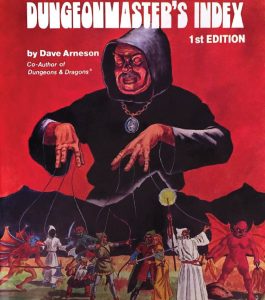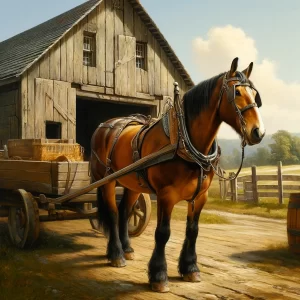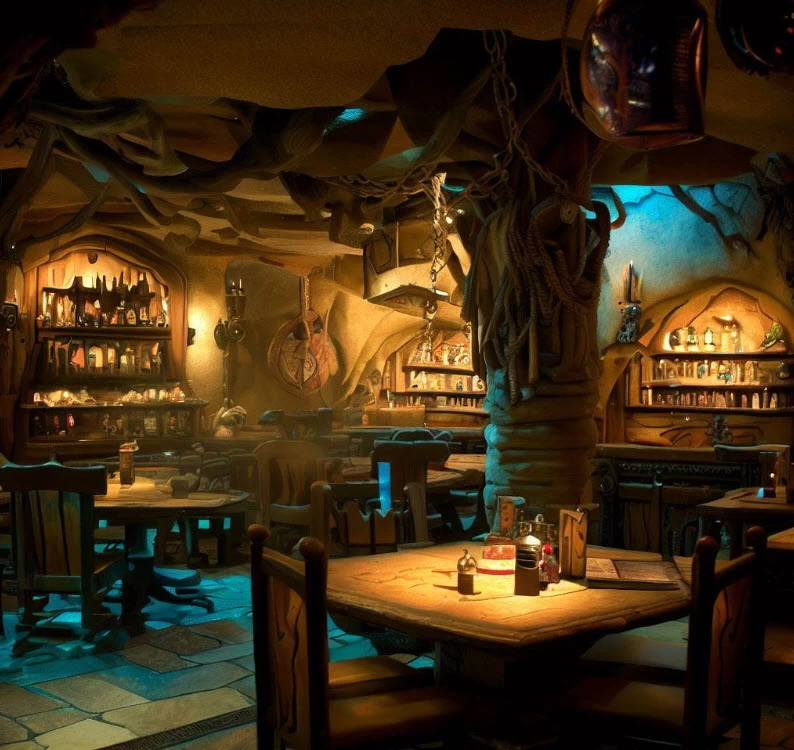
In the enchanting and multifaceted universe of Dungeons & Dragons, inns and taverns are more than just background elements; they are vibrant establishments pulsating with life and opportunities. Dive deep into the intricate world of inns and taverns, as we untangle their historical roots and shed light on the myriad possibilities they bring to your D&D adventure.
A Historical Perspective
Inception and Evolution
In the early epochs, the concept of inns was non-existent. Travelers and pilgrims sought refuge in the homes of amiable farmers or town residents. This shelter-seeking was often fruitful, given the hosts' keen interest in news from the outside world brought by these wanderers.
As communities burgeoned, housing a population ranging from 150 to 500, the notion of offering food and shelter to travelers in exchange for money gained traction. The proximity to bustling trade routes could significantly influence the number of inns a community harbored, with larger towns and trade centers supporting a plethora of inns and taverns.
The Inn and Tavern Dichotomy
Modern language has blurred the lines between "inn" and "tavern." Historically, however, these terms held distinct meanings. An inn served as a haven where travelers could find both food and lodging for a fee. In contrast, a tavern was predominantly a place to savor ale and other beverages, alongside food offerings, resembling the modern-day English pub or public house.
The common misconception might lead one to overlook the subtleties of these establishments. A quaint village with a population not exceeding 150 might not feel the need for an inn but would likely host a tavern serving as a communal nucleus. In these instances, a wandering traveler seeking shelter might have to resort to sleeping outdoors or plea for hospitality from the locals.
Delving into the Daily Operations
The Backbone: The Innkeeper
The popular literature might portray innkeepers as stout, balding men with fleeting memories, but D&D does not confine them to these stereotypes. These individuals, predominantly male, exhibit varying physical characteristics and possess an astute sense of observance. Not easily deceived, they might lack cunning but are integral in maintaining the smooth operation of the establishment.
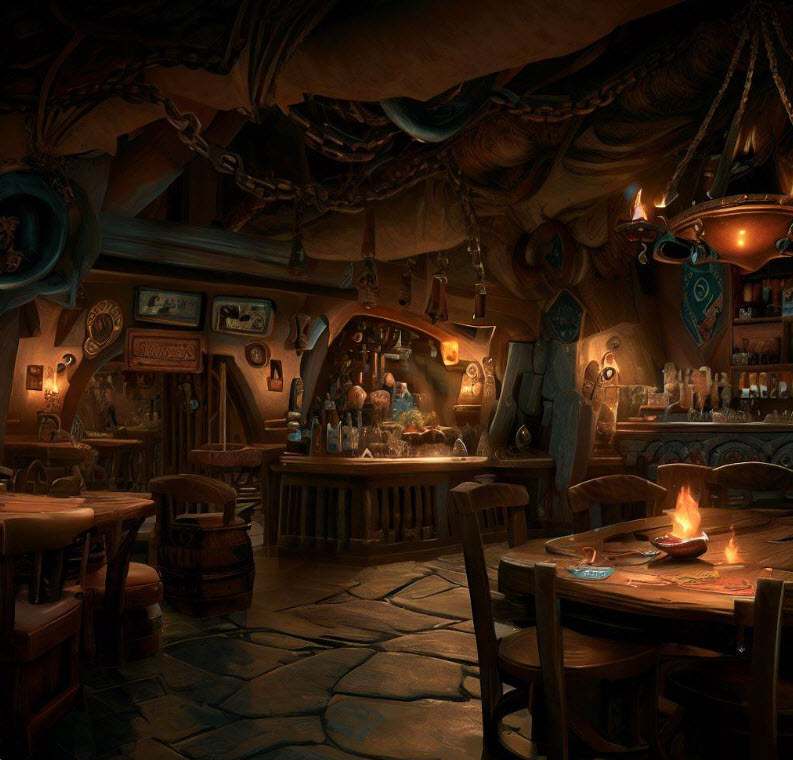
Know the Supporting Cast: Apprentices and Assistants
The apprentices, often young individuals aged 12, learning the ropes of innkeeping, form the backbone of daily operations. From handling stable duties to assisting in the kitchen and tavern, their roles are diverse. While their literacy levels might be low, they excel in basic mathematical computations, under the watchful eyes of the innkeeper.
Their roles were as diverse as the day was long. At the crack of dawn, they could be found attending to the stable duties, their youthful energy a match for the spirited horses they cared for. With brooms and buckets in hand, they ensured that the stalls were clean and the animals well-fed, becoming small custodians of the inn's equine guests.
As the day progressed, they transitioned to the bustling heart of the inn - the kitchen. Here, amidst the sizzle of frying pans and the aromatic embrace of herbs and spices, they became adept assistants, peeling, chopping, and stirring under the watchful eyes of seasoned cooks. Their young faces, flushed from the heat and hard work, became a testament to their dedication and growing expertise.
With time, their competencies blossomed, nurtured by the guidance and wisdom bestowed upon them by the innkeeper, who himself became a surrogate parent, nurturing them into becoming capable and responsible members of the inn community. Through their experiences, these apprentices embarked on a journey of growth and learning, a journey that promised to mold them into the future caretakers of the inn's legacy, ensuring its prosperity for generations to come.
The Role of Women in the Inn
During the medieval period, a time when societal norms and traditions dictated the daily rhythms of life, women found themselves relegated to a handful of permissible roles. These roles were often confined within the domestic sphere, encapsulating a range of activities that were vital for the smooth running of household and business operations, particularly in establishments like inns.
At the forefront of these operations was the innkeeper's wife, a figure of grace and resilience, who orchestrated a symphony of day-to-day activities with skill and finesse. Not only was she tasked with the management of culinary affairs, which involved overseeing the preparation of meals that tantalized the taste buds of weary travelers, but she also had a keen eye for details, ensuring that the textiles and linens gracing the inn were meticulously sewn and maintained, adding a touch of warmth and comfort to the lodging areas.
Furthermore, the innkeeper's wife was adept at organizing a cadre of young women who assisted her in maintaining the heartbeat of the inn. These young women were entrusted with a spectrum of vital tasks, a testament to their indispensability. From the break of dawn, they could be seen engrossed in various chores, such as milking cows, an activity that required both strength and gentleness, and collecting fresh eggs, a task that promised a bounty of nutritious meals for the patrons.
Additionally, these women showcased a duality in their roles as they often doubled as waitresses. Donning this role, they metamorphosed into the smiling faces that greeted guests at the dining halls, weaving through the spaces with trays laden with steaming dishes and frothy ales. Their presence added a vibrant and bustling energy to the inn, serving as the conduits between the kitchen's fiery hearths and the eager patrons awaiting their meals.
These women, through their multifaceted roles, played an indispensable part in crafting the inn's reputation as a sanctuary of warmth, nourishment, and hospitality. The seamless functioning of the inn was a testament to their relentless efforts, where their contributions transcended beyond mere duties, becoming an embodiment of nurturing and care that transformed an inn into a home away from home for travelers from various walks of life. The harmony and camaraderie shared among these women also nurtured a sense of community and solidarity, turning the inn into a vibrant hub of activity, where stories were shared, friendships were forged, and where the essence of medieval society was reflected in the most authentic manner.
The Role of Women in the Tavern
During the medieval period, the roles and responsibilities of women in taverns varied greatly depending on the specific region, culture, and individual circumstances. It wasn't uncommon to find women working in taverns, not only in roles confined to the kitchen or as waitresses but also sometimes in more authoritative positions such as proprietors or brewers, a role that had historically been associated with women in many cultures.
In the bustling and often boisterous atmosphere of taverns, women who worked there might have developed a reputation for being robust and tough, partly as a mechanism to assert authority and maintain order in what could be quite a rowdy environment. Their demeanor could be seen as 'butch', characterized by a certain kind of resilience and strength, both necessary attributes to survive and thrive in such settings.
Moreover, it is important to consider that these women, much like their male counterparts, would be adept at handling the various demands of their job - from managing the financial aspects of the establishment to ensuring the safety and satisfaction of their patrons. Their daily interactions would undoubtedly involve negotiations, problem-solving, and at times, mediating disputes, requiring a tough, business-minded approach.
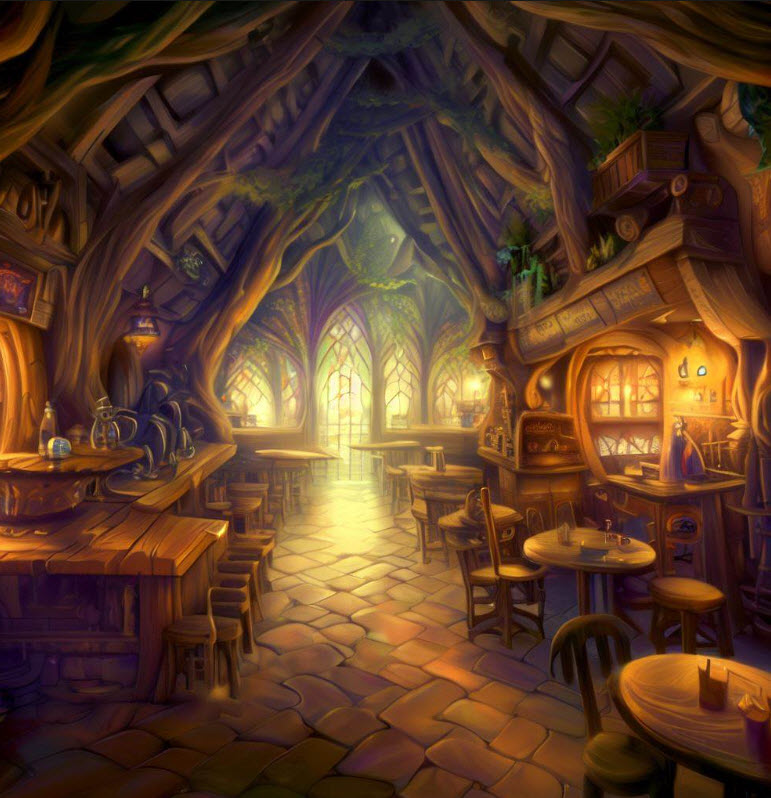
However, it's essential to avoid painting a monolithic picture of women in this period. Some women might have adopted a more feminine demeanor, blending grace and toughness in a unique blend that defied stereotypical gender roles. They might have found ways to assert their influence and control using different methods, perhaps through charm, wit, or a keen understanding of human nature.
So, while it is entirely possible and even likely that many women in taverns during the medieval period exhibited qualities that were 'butch' and tough akin to men, it's also plausible that there were a myriad of personalities and approaches among these women, who navigated their roles in taverns with nuance and complexity, carving out their space in a world that was often dominated by men.

Smugglers, Courtesans and Assorted Criminals
Inns and taverns were complex and multifaceted places that harbored a wide range of individuals, including those involved in both lawful and unlawful activities.
- Prostitutes and Courtesans: These establishments were common places where prostitutes or courtesans might operate or socialize. Sometimes, they might even live on the premises, offering their services to travelers and locals alike. Courtesans, on the other hand, were typically more upscale and might be found in higher-end establishments, entertaining and mingling with wealthier patrons.
- Merchants and Traders: Many inns and taverns were situated along busy trade routes, making them common stopping points for merchants and traders. These individuals would not only rest at these places but also engage in trade discussions, negotiations, and even formalize deals.
- Illegal Traders and Smugglers: Given the often secluded and discrete nature of many inns and taverns, they could easily become hubs for illegal trading activities. Smugglers and black-market dealers might use these places as meeting points to conduct business under the radar.
- Drug Dealers: While the types of drugs available during the medieval period might have been quite different from what we commonly think of today, it is entirely plausible that there were individuals selling various kinds of substances, from herbal concoctions to perhaps more potent and dangerous mixtures. Drugs in D&D
- Human Traffickers: Sadly, the trafficking of individuals, including slaves, was not uncommon during the medieval period. Taverns and inns could potentially serve as locations where such transactions took place, either in a covert manner or perhaps even quite openly, depending on the specific time and place.
- Assorted Criminals: These establishments could also be frequented by various criminals, from thieves to bandits, seeking refuge or looking to plan their next heist. They might have used the bustling and noisy environment of the taverns as a cover to discuss their plans.
- Entertainers and Artists: Apart from the shady characters, these places were also frequented by entertainers, musicians, and artists, who provided the much-needed amusement and entertainment to the patrons, often in exchange for food, drink, or a few coins.
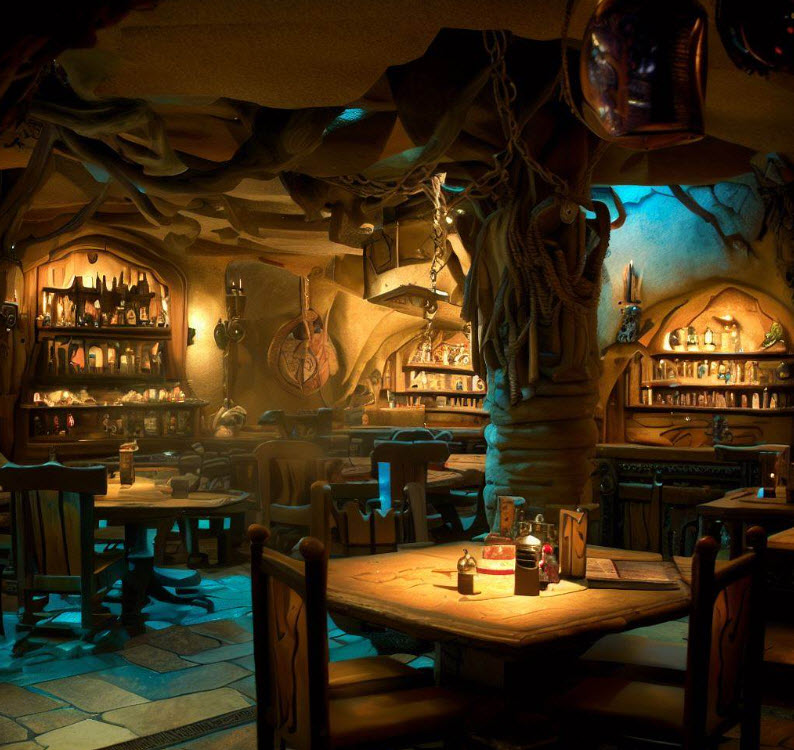
In the midst of all this, regular townsfolk, farmers, and laborers would be mingling, enjoying a drink, sharing news, and perhaps engaging in a bit of gambling or other forms of entertainment. It's important to remember that these were vibrant, bustling places that served as a crossroads for many different walks of life, embodying the complexity and diversity of society.
Heart of the Establishment
The common room, a spacious and welcoming area, forms the epicenter of social interactions within the inn. Depending on the owner's preferences, it could either emanate a dark, cozy ambiance or a bright and cheerful atmosphere. This space was not just a hub for dining but also a platform where news circulated and entertainment thrived.
Various forms of entertainment, including performances by traveling minstrels or local musicians, enriched the vibrant atmosphere of the common room. Sometimes, acting troupes would grace the inn's courtyard, offering performances for a nominal fee, adding a festive touch to the establishment.
The Greater Surroundings and Functions
Inns and taverns could either nestle within bustling towns or occupy serene spots in wooded areas outside urban centers. Their features could include a courtyard, a well, stables, and even barns, providing comprehensive services to travelers and locals alike. These establishments served as critical waypoints, generally spaced a day's horseback ride apart, catering to various societal needs and acting as news hubs.
As we delve into the rich and immersive world of Dungeons & Dragons, incorporating the multifaceted roles and intricate designs of inns and taverns can elevate the gaming experience. Understanding their historical context, structural nuances, and the bustling life within these establishments can bring depth and vibrancy to your D&D adventure, opening doors to endless narratives and exciting encounters.


